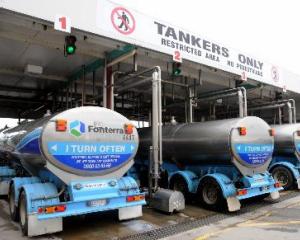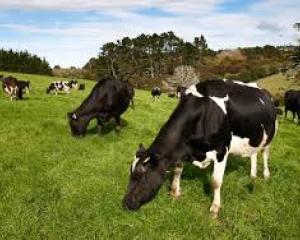While doubtless on firm technical ground in ruling out a formal investigation into the price of milk, the Commerce Commission's decision last week puzzled many casual observers. That decision came amid mounting public unease and complaint over the cost of what was once considered a food staple: that is to say, readily available, popular and affordable.
Milk is now arguably reaching luxury-item status, particularly for those of lesser means, and the pressure for a comprehensive inquiry into just why this should be is behind the decision by the Cabinet on Monday to initiate a select committee inquiry, pushed for by Labour and the Greens.
For with the inexorable rises in the cost of milk itself comes the inevitable rise in prices of its commonplace derivatives - cheese, yoghurt, butter - that have for so long formed a healthy high-protein, vitamin- and mineral-rich component of the New Zealand diet.
The commission's investigations into whether it should have instigated a formal inquiry into the price of milk fell under Part 4 of the Commerce Act - which regulates markets where there is little competition and little likelihood of an increase in competition. In the event, the commission stated existing regulation arrangements meant intervention was not possible.
In its investigation it interviewed 32 players at four levels of the domestic milk supply market: farm gate supply; factory gate supply; wholesale supply; and retail supply. At farm gate supply level it found it did not have the grounds to intervene, it said competition existed at the retail level between the two supermarket chains, while for wholesale milk, Fonterra and Goodman Fielder competed for supplies.
Notwithstanding this result, Fonterra still faces potential challenges over milk pricing with other probes - including one into alleged abuse of market powers, and an inter-departmental review of Fonterra's raw milk price.
Many put the consistently rising milk prices down to the supermarket duopoly, with the two main players in the market setting the benchmark and leaving corner dairies and petrol stations to provide real price competition.
There is at least anecdotal evidence this does exist: some smaller outlets around the country sell two litres of milk for as little as $3, while supermarkets routinely pitch it, depending upon brand, between $4 and $5.50. Supporting the suggested select committee inquiry, Agriculture Minister David Carter has said that if it "demonstrated to New Zealand there's a wide variety of pricing at the retail sector for people to buy milk, that would be quite useful", adding he seldom personally bought milk at the supermarket because he could find it cheaper elsewhere.
The reality for many busy hardworking people may be, however, that they need to do their shopping in one hit at the supermarket - and that the additional trip to another source to find cheaper milk may eat up any potential savings in either petrol, money or time.
Retail strategies aside, the price New Zealanders pay for milk is directly related to the price it fetches internationally: likewise, the price of lamb, beef or bread.
While these may be higher than was once the case, this is the flipside of being an exporting nation which earns much of its keep through such commodities in a globalised world. The returns are fed back into the economy, and ultimately help pay for the plethora of imported flat-screen television sets, iPads or other electronic or consumer goods that find their way into New Zealanders' homes - assisted by advantageous prices arrived at through burgeoning free-trade agreements.
Fonterra insists retail milk prices are in the lower 25% internationally and are fair and reasonable. This is hard to accept for a country in which milk was once scarcely more valuable than water, and a half-pint of which used to be given away daily to every school pupil in the country.
Now heavily sugared soft drinks can be routinely purchased in supermarket specials for a quarter to a third of the price of the equivalent volume of milk, and this has to be as of much concern to public health officials as it is for individual families. There are no simple solutions - subsidies are not the answer - to the high price of milk, which is why a select committee inquiry is both welcome and necessary.






